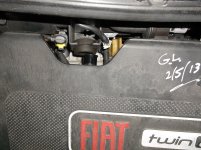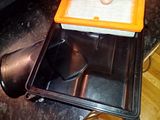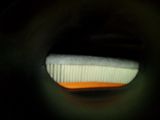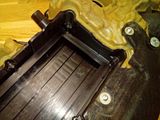The Panda Nut
Nutty about Pandas Infected by Panda virus and OPD
They have a camshaft and that is driven by a cam chain.
It's just the link between the camshaft and the valve lifter is fluid (engine oil).
The engine oil is pumped up into and controlled by the Multiair solenoids via a filter/relief valve into passage ways between the cam and the valve lifter.
By increasing and decreasing the oils pressure within the link alters the valve lift and timing.
Basically it has a "Hot" inlet camshaft profile that works best at higher engine speeds, but not very well at slower speeds.
So it backs off the lift and alters it's timing by reducing oil in the link for slower engine speeds as less oil doesn't transmit the full cam profile, then pumps more oil into the links to transmit the full cam's profile at higher engine speeds.
https://www.youtube.com/watch?v=y8npI_wY-Bs
As it can control the air entering the engine at all engine speeds better, it does without a throttle butterfly valve in the inlet.
This reduces pumping losses (the effort the engine expends) that would normally be created when the falling pistons suck in air through a closed or partially throttle valve.
There have been a few Multiair problems, though most seem to involve the unit fitted to the four cylinder engines.
As it's reliant on engine oil, it's vital the correct grade and spec is used and that the oils level is correct (wait to you see the dipstick, it's almost impossible to read!).
The oil works hard and is prone, like all turbo charged cars to carbon building up in it, so regular changes should keep it in good health.
Oddly, cleaning or replacing the Multiairs filter isn't part of any service schedule, though it is fairly easy to get at, remove and clean through a cap in the top of the cam cover.
Thanks for a great explanation and for correcting my misinformation. I actually feel a bit easier about it for reading this. I usually over service so hopefully I will have reliable service and no super costs to contend with in mid engine life.



![DSCF1631[1].JPG DSCF1631[1].JPG](https://cdn.fiatforum.com/data/attachments/157/157685-44e76fc38cf4739a5b13636a887087a5.jpg)
![DSCF1626[1].JPG DSCF1626[1].JPG](https://cdn.fiatforum.com/data/attachments/157/157641-fef6cd2013802014d8251fd7a90f7571.jpg)
![DSCF1630[1].JPG DSCF1630[1].JPG](https://cdn.fiatforum.com/data/attachments/157/157748-85945c9c0fda0abd28b41022ad66dd71.jpg)




